When is it better to drill a well in the water
There are no seasonal restrictions in water well drilling, but from the point of view of the laboriousness of the process and the convenience of the work, there are pros and cons. The most appropriate period, when it is better to drill a well on water, is considered the end of summer, autumn, but this is not a rule, but rather a recommendation, since everything depends on the method of drilling and the conditions of the area.
Spring drilling
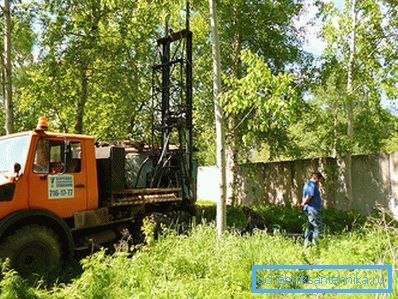
The most unfavorable period for drilling is the spring period. This is due to the high level of groundwater, which not only complicates the drilling process, but also causes difficulties in determining the main aquifer. In addition, there are difficulties with the entrance of equipment.
Summer

In terms of comfort, this period can be considered the best for drilling a well for home. The lower groundwater level makes it possible to more accurately determine the location of the aquifer. Most homeowners tend to make a well during this period, so the number of orders in drilling organizations increases, respectively, and the price of drilling increases. Performers, seeking to process the largest number of orders, are in a hurry, which ultimately affects the quality of work. Also, when drilling and arranging the site, plantings on the site may be damaged. A more favorable period for drilling a well in the summer can be considered mid-late August. If you still plan to drill the well in summer, you will need to get in line in advance even in winter / spring.
Drilling in the fall
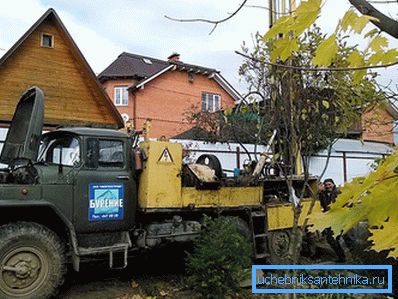
The best time to drill a well in the fall is the month of September, when the weather is still dry and prolonged rains did not start. During this period, there are no problems in determining the aquifer, comfortable air temperature makes it possible to drill throughout the day. If you start drilling in the later autumn period, then you can restrict yourself to the preparation of a well by performing partial drilling to the depth of soil freezing, for further drilling in the winter.
Winter
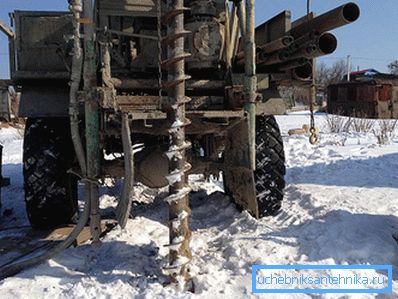
If you are going to do a well not on your own, but to order in a drilling organization, then winter is undoubtedly the best period for this. There are several reasons for this:
- In winter, the number of orders for drilling drops sharply, respectively, the price of work decreases, in contrast to the summer-spring period, the price drops by 10–15%.
- The quality of work due to fewer orders increases.
- There is no danger of damaging the plantations on the site and spoil the landscape.
- Frozen soil makes it possible to pass the technique.
- In winter, the groundwater level is minimal, which reduces the risk of collapse of the walls of the well.
The restriction in carrying out drilling operations in the winter time can be imposed only by the air temperature below -20 ° C, and this is connected not so much with the comfort of drilling as with the complexity of the work: the equipment is covered with frost, which has to be removed all the time. Also, the frozen soil can be a problem for small-sized drilling installations, although if you carry out the preparatory work in the fall, before the soil freezes, you can successfully drill with the help of the MGBU installation in winter.
Where you need to choose a place under the well
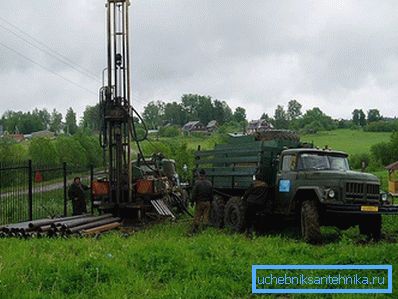
One of the main points that can determine whether a well with water and, in addition, good quality water will be a choice of location. When choosing where to drill, it is mainly necessary to take into account the presence of a shallow aquifer and the absence of sources of pollution. In a radius of at least 15 m from the well there should not be cesspools, toilets, compost and dung heaps, the well should be at least 5 m from the foundations of the buildings. Based on these criteria, several promising places on the site are selected, and then a specific place is determined, which is more advantageously placed in terms of connecting to the house and convenient access of the equipment. You should not choose a place at the lowest point in the area, as during heavy rains or spring floods the well may be flooded.
Recently, homeowners are increasingly willing to make wells in the basement of the house, but this is not always justified. The fact is that in case of silting a well or failure of water-lifting equipment, it will be difficult to carry out repair work in conditions of limited space. Therefore, before you start drilling a well in a house, you need to weigh the pros and cons. The only option that is acceptable for a well in the basement is a shallow well with the installation of a surface pump.
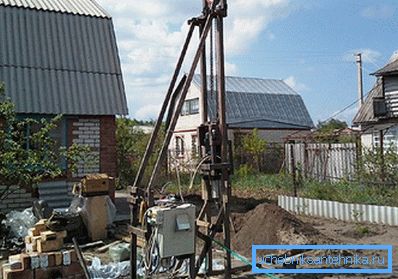
Based on the foregoing, it can be concluded that the restriction for drilling shallow wells using the MGBU installation may be the winter period, while at the same time using large equipment, winter is the best time for setting the well.
Video
How to choose a place for drilling a well and what types of well drilling exist, you will learn from this video: